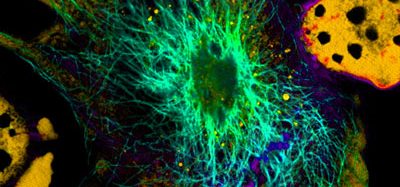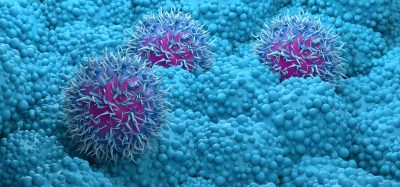Brain cells that play a crucial role in appetite identified
Posted: 13 May 2016 | Victoria White, Digital Content Producer | No comments yet
Scientists have identified cells, NG2-glia, that play a crucial role in appetite and weight gain – a discovery that could lead to anti-obesity treatments…

Scientists from McGill University have identified brain cells that play a crucial role in appetite and weight gain.
The discovery could lead to the development of new drugs to control weight gain and obesity.
About four years ago, Dr Maia Kokoeva and her team set out to explore which brain cells might play a role in the process of leptin sensing and weight gain. Leptin is a hormone which is produced by fat cells, and is delivered by the blood to the brain to signal the brain that we are full and can stop eating. Dr Maia Kokoeva and her team discovered the answer lies in the median eminence.
The median eminence is a brain structure at the base of the hypothalamus. It acts as a hub through which hormones and molecules of various kinds travel in both directions between the brain and the bloodstream to ensure that the body functions smoothly.
The McGill research team has now discovered that without a particular group of cells (known as NG2-glia cells) in place in the median eminence, the leptin receptors in the brain never receive the messages from the body telling it that it is sated.
“Most of the brain is a well-protected fortress, designed to shelter delicate nerve cells,” says Kokoeva. “The median eminence is outside these protections, and so can be a dangerous environment for the nerve cells that detect leptin. We think that the NG2-glia cells act to support and shelter the leptin receptor neurons, enabling them to instruct the body when to stop eating.”
“We developed an interest in NG2-glia cells in this specific part of the brain because unlike neurons, during much of our adult lives these cells are constantly dividing and they do so most actively in the median eminence,” says Tina Djogo, a McGill doctoral student. “But though these cells were first described about thirty years ago it has been difficult so far to pinpoint their exact functions in the adult brain.”
“Stunning” results
Because of their particularly high turnover in the median eminence, the researchers wondered if the NG2-glia cells might play a role in leptin sensing and therefore in appetite control. So they used a drug to kill the NG2-glia cells in the median eminence of a group of mice and then watched to see whether there was a difference in food intake. The results were stunning.
Within three days after they started to receive the medication, some of the mice dubbed “gainers” had already started to eat more compared with the control group of mice who had not received medication. And by 30 days afterwards, the weight of some of the mice had doubled – from 25 grams to around 50 grams.
“But what was most exciting to us, was that even though NG2-glia are found across the brain” explains Sarah Robins, a research associate. “It was only when we removed these cells from the median eminence that we saw this clear increase in body weight.”
The researchers then corroborated the role of the NG2-glia cells in the median eminence in appetite control through experiments using genetically modified mice, and also by using irradiation. This latter discovery suggested an explanation for a previously unexplained phenomenon in human brain cancer survivors.
“People who have been treated for brain tumours using radiation to block cell proliferation often become overweight,” says Kokoeva. “However, there has never been any satisfactory explanation, but our experiments in mice now suggests that the reason for this weight gain may be the loss of NG2-glia in the median eminence as a result of radiation.”
The researchers are hopeful that the identification of NG2-glia in the median eminence as crucial elements in body weight and appetite control will pave the way to new targeted anti-obesity approaches.
| The cells which play an important role in sensing when we are full – the leptin-sensing nerve fibers – are in green. This video shows clearly how closely intermingled with them the NG2-glia cells (in red) are in the median eminence. CREDIT: Kokoeva lab – McGill University + Research Institute, McGill University Hospital Centre |






